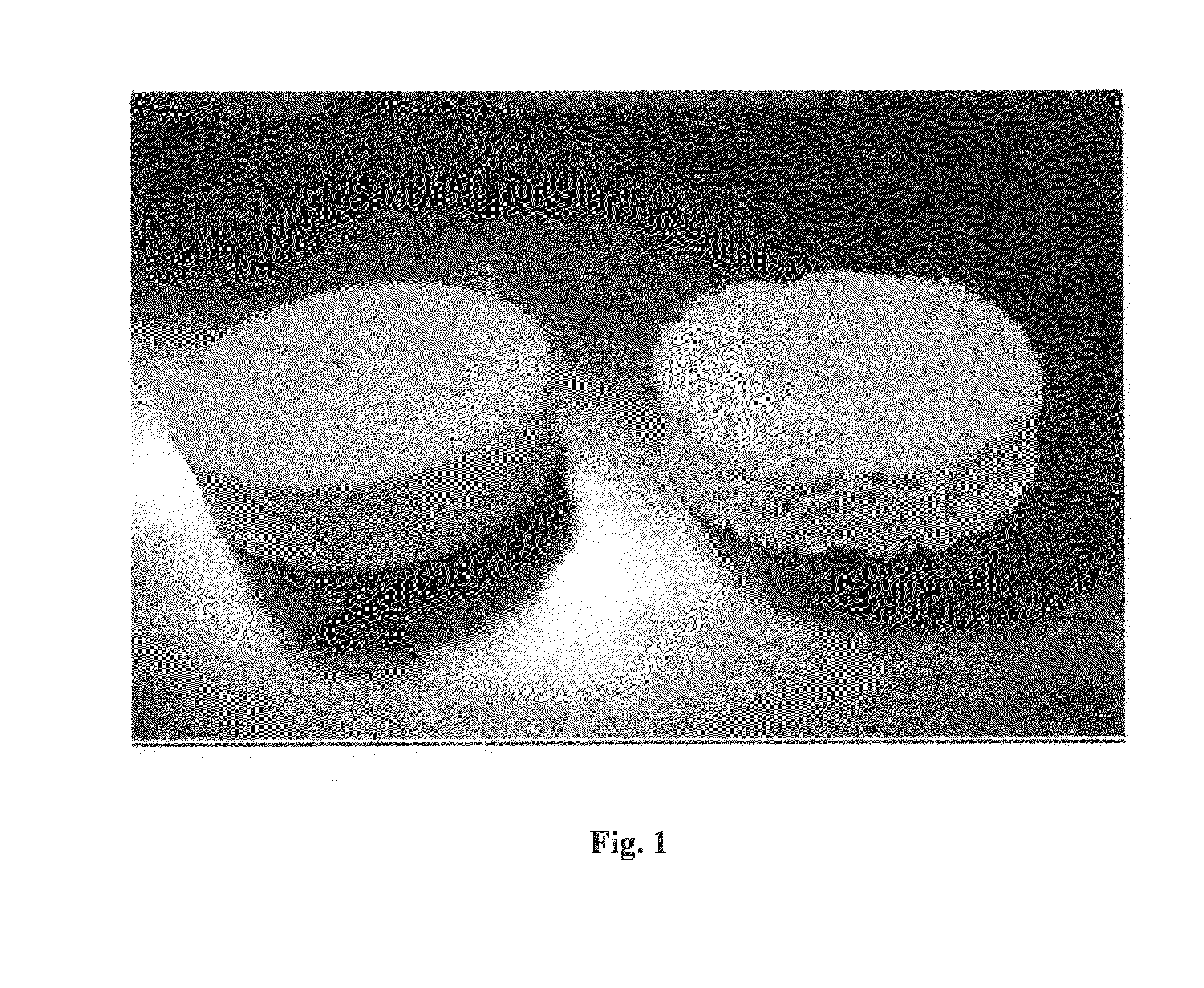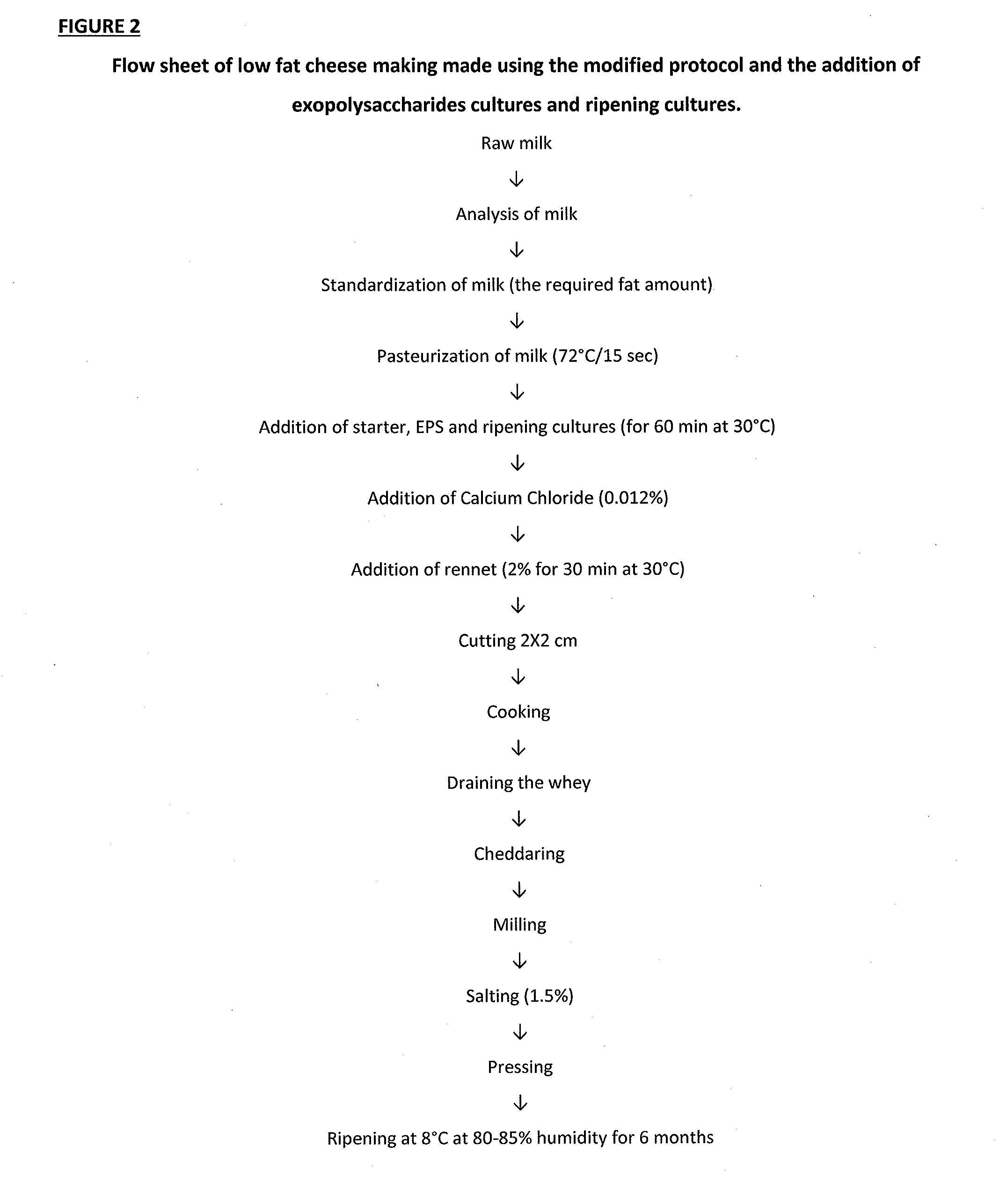A novel all natural low fat cheddar cheese
- Summary
- Abstract
- Description
- Claims
- Application Information
AI Technical Summary
Benefits of technology
Problems solved by technology
Method used
Image
Examples
Embodiment Construction
[0016]The detailed description for the production of “all natural” low fat Cheddar cheese using exopolysaccharides producing cultures and ripening cultures included the following steps:
[0017]Milk standardization: Raw milk is standardized to the required fat amount.
[0018]Milk heat treatment: Raw milk is pasteurized at 72° C. for 15 sec in a tubular pasteurization system.
[0019]Addition of starters: A mixture of the following microorganisms was added to cheese milk preheated to 30° C. Commercial starter culture containing a mixture of Lactococcus lactis subsp lactis and Lactococcus lactis subsp cremoris was used. A 1:1 mixture of two selected exopolysaccharides producing cultures identified as Lactobacillus delbrueckii subsp lactis and Lactobacillus paraplantarum were also added. Both lactobacilli were classified as capsular, ropy, and unattached. Strings of about 10 mm were formed by the previously mentioned Lactobacilli when their colonies were touched with a wire-inoculating loop.
[0...
PUM
 Login to View More
Login to View More Abstract
Description
Claims
Application Information
 Login to View More
Login to View More - Generate Ideas
- Intellectual Property
- Life Sciences
- Materials
- Tech Scout
- Unparalleled Data Quality
- Higher Quality Content
- 60% Fewer Hallucinations
Browse by: Latest US Patents, China's latest patents, Technical Efficacy Thesaurus, Application Domain, Technology Topic, Popular Technical Reports.
© 2025 PatSnap. All rights reserved.Legal|Privacy policy|Modern Slavery Act Transparency Statement|Sitemap|About US| Contact US: help@patsnap.com


